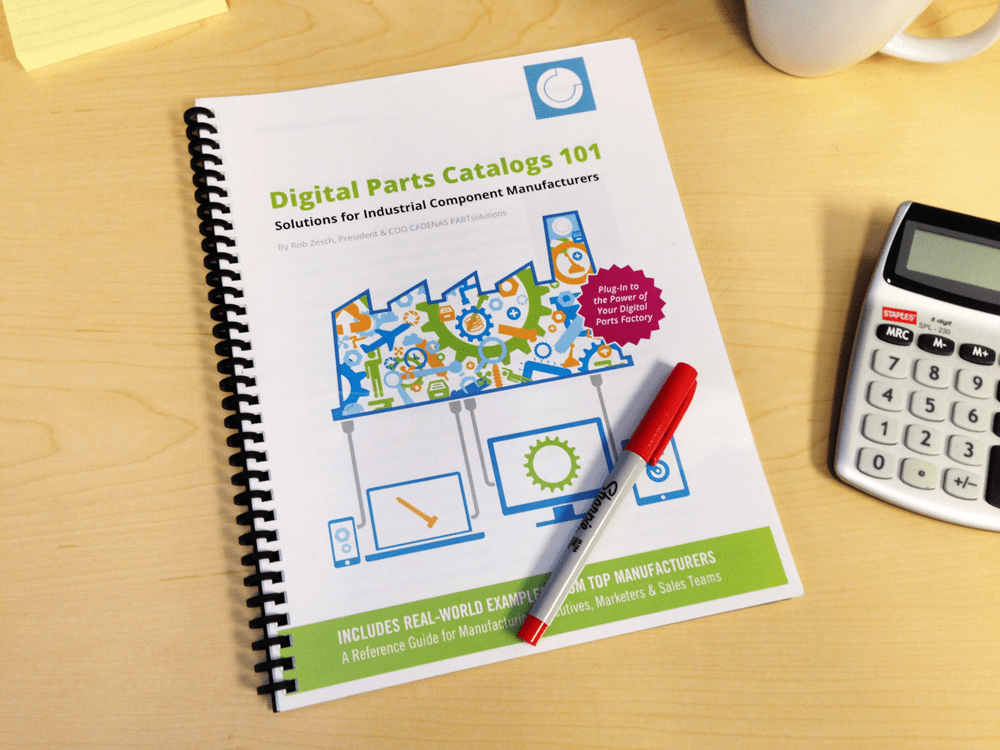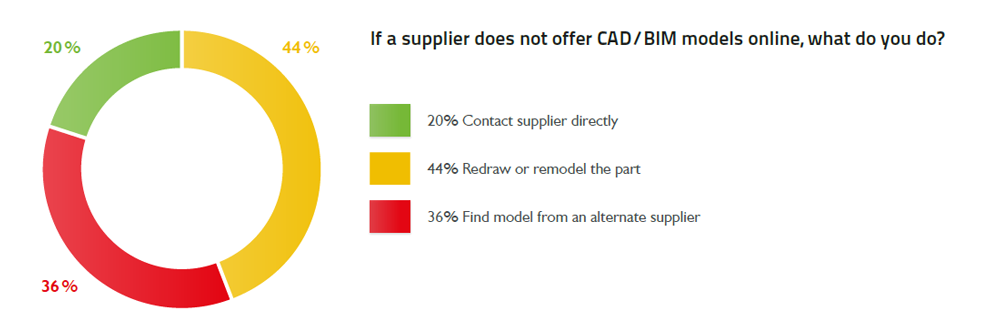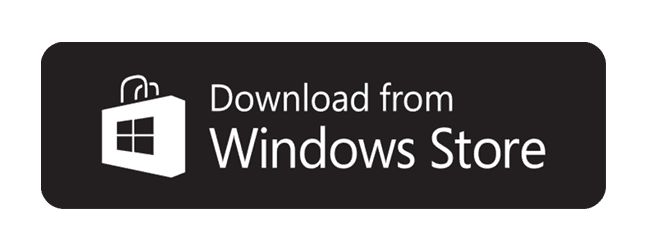Digital Parts Catalogs 101: A Guide to Digital Transformation for Industrial Component Manufacturers
About this guide
This guide is designed as an introduction and a reference for industrial manufacturers looking to begin the path to digital transformation. By using an online parts catalog or product configurator, manufacturers can enhance their sales, marketing and customer service with minimal time and effort. Many portions of this book reference “product configurators” and “parts configurators” as they are used by manufacturers of industrial hardware, components and machinery.
While many of the business concepts outlined in this guide can easily translate to retail and consumer product configurators, the main emphasis of this guide focuses on topics related to industrial components, parts configuration, CAD downloads and the specific needs of mechanical designers and engineers.
In addition to highlighting the “nuts and bolts” of a digital parts catalog and the value they can deliver for your organization, this guide also features real-world examples of digital transformation in businesses both large and small. Learn how they have increased sales revenue and improved customer experience with their digital parts catalogs, online configuration and CAD downloads.
Digital Parts Catalogs 101 is one of our most popular ebooks for industrial marketers and manufacturers looking to begin the path to digital transformation. The content is also available as a free PDF download. Download Here
How to use this guide as part of your digital transformation journey
Beginner? Are you new to digital parts catalogs? Are you looking for an introduction to the potential value they can bring to your marketing and sales organization? This guide is a great way for an industrial manufacturer to be introduced to the concept and how it applies to digital transformation. It can also serves as an easy-to-use reference when discussing solutions with service providers in the future.
Intermediate? You may be familiar with the core concepts of digital parts catalogs and the value they bring to a manufacturing organization, and now you’re looking to expand your horizons on the subject. This guide will work well to increase your knowledge on the features and evolution of capabilities that digital parts catalogs offer a manufacturer, as well as offering a wealth of information to reference in the future.
Advanced? You’re already a 3D digital parts catalog pro – but you’re looking for a refresher on some of the new features available and to see where the best-practices and digital transformation trends.
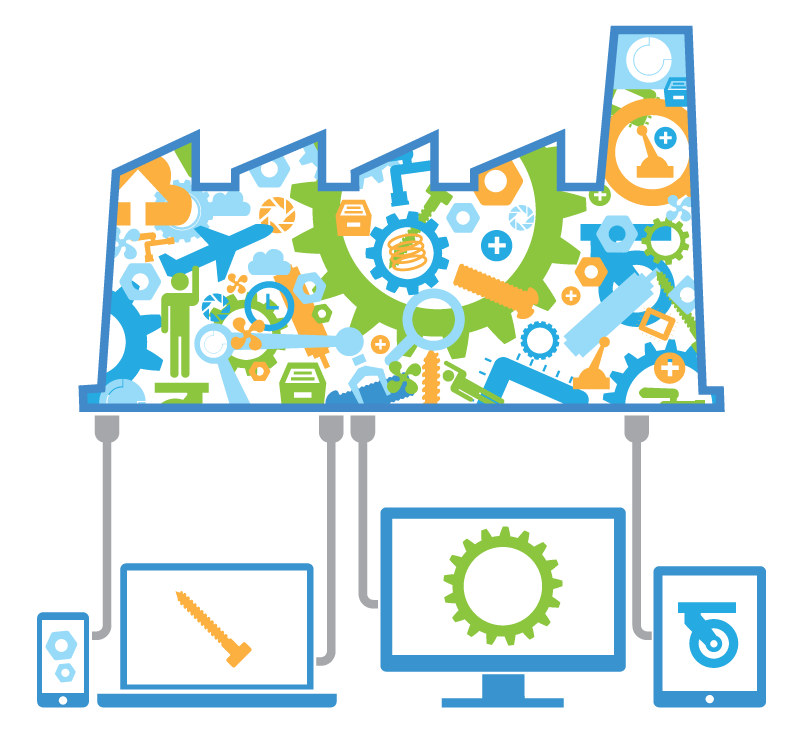
Table of Contents
- Intro to Digital Parts Catalogs
- How Manufacturers are Using Digital Parts Catalogs to Build their Business
- 3D Catalogs as Strategic Sales Drivers
- Digital Parts Catalogs Extend Across Your Marketing Landscape
- Providing a Remarkable Customer Experience
- Customer Service as a Sales Priority
- Engineering Support is Now Self Service
- Free Up Your Engineering Resources
- What Engineers Want
- Avoiding Common Pitfalls – Ensure your catalog solution is built to last
- Key Questions to Ask Your Digital Catalog Provider
- Keep Your Solution Light and Agile
- Which design package is the best fit?
- Create Your Own Catalog, DIY Style
- It’s About What Works for You
- High Quality Models Are Critical to Engineers
- Apply Your Knowledge and Grow Your Business
Intro to Digital Parts Catalogs
Today’s digital parts catalogs are an essential resource for manufacturers and their customers on the path to digital transformation. Modern catalogs contain critical product information, part numbers, data sheets, application info, related products, engineering drawings and 3D models in various CAD and imaging formats.
This guide emphasizes the evolution of integrated online tools that engineers use to make purchasing decisions. Specifically, this guide will highlight how industrial component manufacturers are using online product catalogs and configurable CAD downloads to promote and sell more products.
A digital parts catalog is much more than the name suggests. Many think of a “digital” version of their paper catalog. While this is technically correct, it’s pretty far off-the-mark from a functionality and value standpoint. Today’s digital parts catalogs are dynamic, powerful sales and marketing tools which place a manufacturer’s parts directly in the hands of their customers, not a just a paper catalog on your computer screen.
In the past, a simple collection of symbols was good enough for CAD drafting systems. The next generation systems delivered static libraries of pre-built 3D models that were available ”just-in-case” a designer needed one. Today, new technology behind digital parts catalogs is making the job of purchasing supplier parts easier, with more complete information and native CAD data available “just-in-time”.
Digital Parts Catalogs with 3D drawings and models have rapidly become a must-have for engineers and designers who rely on the time-saving capabilities to complete their job on time and on budget. What was once a huge competitive advantage, has now become a necessity for component manufacturers to keep up with market demands. Now that digital parts catalog technology has matured and online catalogs have become widely adopted, companies are now looking to expand their offerings with powerful new capabilities to drive demand and revenue into the future.
Adoption of digital parts catalog technologies is transitioning from the Early Adopter stage to early majority. This means there is still an opportunity for early majority to have a competitive advantage before the technology becomes ubiquitous. It’s anticipated that the market will soon see majority adoption for industrial component manufacturers.
3D Catalogs and Digital Transformation as Strategic Sales Drivers
Few industrial manufacturers currently using digital parts catalog technology would dispute the power and versatility brought to their marketing capabilities. Today’s engineers demand quick and easy access to accurate, digital representations of component parts for their designs. This is the essence of a digital part and why companies invest resources on digital transformation. Parts are downloaded and used as a placeholder for a physical component within the design. Without these models, engineers could be forced to spend countless hours searching for and redrawing parts they buy from a vendor. The key for manufacturers, is making sure their part number and part data carry through the design process and onto the bill of materials (BOM), making for easy acquisition by the purchasing department.
This is commonly known in the industry as getting “designed in.” According to research conducted by CADENAS PARTsolutions, once a part is downloaded and inserted into a design, it gets purchased 82% of the time. Download the Research Report
Digital Parts Catalogs Extend Across Your Marketing Landscape
For most industrial manufacturers, the goal of most marketing activity is to generate qualified leads for the sales team. An extension of that goal is to generate leads at the lowest possible expense in order to maximize the return on investment, or ROI.
Industrial marketers have a good idea of what to expect when looking to generate qualified leads through traditional marketing avenues. The expense is high, the work required is very high and the net sales leads from the effort are typically low. Even when you have a campaign that results in many leads, how many of those are qualified buyers interested in your product?
With a combined approach, marketers can breathe new life into conventional advertising means by promoting their online tools and digital downloads. This cross-promotional approach enables manufacturers to better leverage their technology and demonstrate a clearer marketing ROI with traditional media.
Flip through your latest edition of Design World or Desktop Engineering magazine and you’ll see how many manufacturers are using their ad space to promote their online CAD configuration and downloads. They are driving consumers to their online catalog and tools because they know they convert, and become measurable, qualified sales leads.
With digital parts catalogs, marketers can easily achieve digital transformation with a low cost program that generates leads and sales 24 hours a day and 7 days a week.
Online Traffic
Online catalogs generate traffic for your site because you are offering your customers a valuable resource, free of charge. Visitors will return again and again, because they need these models and now they have a place to find them. Digital catalogs also increase visitor retention and time on your site.
Your digital parts catalog is a vital component of your marketing ecosystem. By supplying content for use with other offerings it adds depth and richness to manufacturer campaigns. Inversely, when marketers use advertising to drive visitors to their digital parts catalogs it adds a very traceable metric, vastly simplifying ROI calculations.
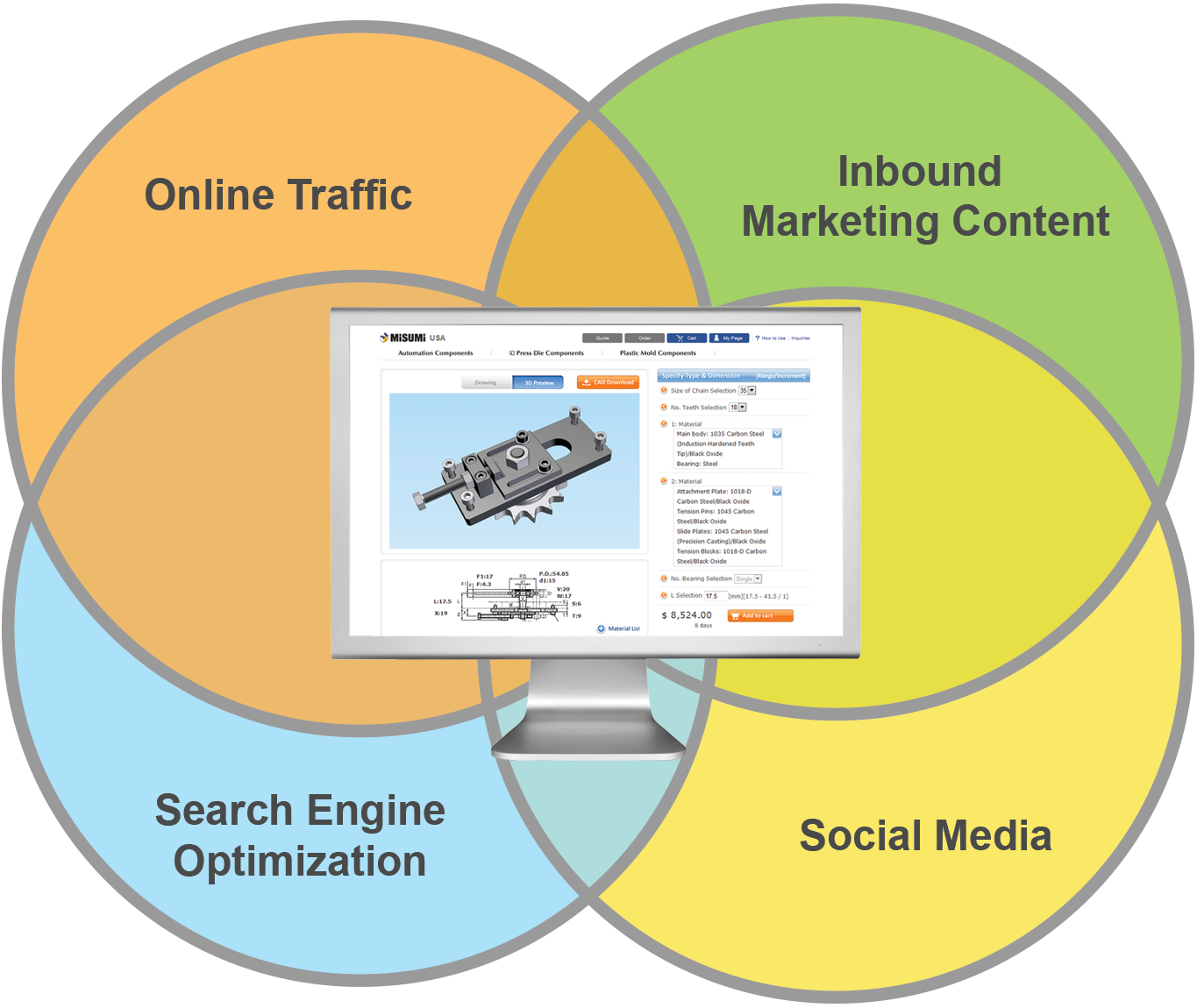
Inbound Marketing Content
Many marketers have embraced the concept of Inbound marketing to drive sales leads with content that attracts and engages prospects. A big challenge with inbound marketing is actually creating the content to support the strategy. Industrial component manufacturers have a huge head start when it comes to content. They can quickly and easily leverage their online tools and CAD models to use as inbound content to attract more customers and ramp up sales leads.
Search Engine Optimization
Digital catalogs can help engineers get found. By keyword optimizing their CAD content and placing within engineering portals, manufacturers will be more easily be found when engineers search online. By building a site structure that provides searchable product information, descriptive keywords and part numbers manufacturers can build their search authority, using the CAD as the deliverable content to convert visitors to leads.
Sales Lead Generation
Online catalogs serve as a lead generation machine. Every digital part downloaded is logged and linked to the appropriate client and email address. This gives a traceable ROI, and provides a qualified list for sales follow up and future marketing campaigns. Each download is a qualified, actionable lead that can be passed along to sales reps or distributors.
Providing a Remarkable Customer Experience
Today it’s not enough to just have a great product, on time delivery and a capable support team. Customers are demanding more and more from the companies they do business with, and they come equipped with the buying power to do so. Engineers want a fast, simple way to get online, find the part they need, put it in their design and order it. They demand simplicity and ease of use, which are cornerstones of digital transformation. By presenting content in a simple and intuitive interface and delivering CAD files on-demand, a manufacturer can meet the exacting needs of their engineering audience. Remember, a remarkable customer experience is mandatory, or else customers will go elsewhere to find what they need.
“Engineers want a fast, simple way to get online, find the part they need, put it in their design and order it.”
“A remarkable customer experience is mandatory, or else customers will go elsewhere to find what they need.”
Customer Service as a Sales Priority
Expanding on the notion of digital transformation and building a remarkable customer experience, suppliers are using their digital parts catalogs to bolster their customer retention and customer service initiatives.
It’s no secret that a happy customer is one who returns again and again, and customer service is a key factor to their happiness. The next generation of customer service is built upon fostering a remarkable experience before, during and after the sale. Consumers expect a simple, intuitive experience even before they become your customer. Online visitors now use customer experience as a determining factor if they are interested in doing business with you.
The importance of “customer experience” has been best highlighted by some of the finest leaders in marketing, manufacturing and technology:
The key to a great customer experience is knowledge of your audience, their needs and what motivates their decision making process. For many industrial manufacturers, their audience is comprised of designers and engineers searching for components to utilize in their designs. These engineering consumers have come to expect configurable models of products before the physical sale, and they expect the files to work seamlessly in their specific CAD system.
A survey we conducted with over 500 design engineers shows that 91% of engineers want files in their specific CAD format and 88% of customers have issues when their only option is a neutral file, not designed to work with their specific CAD system. Download the Survey Report. Download the Research Report
Extending Digital Transformation: Engineering Support is Now Self Service
In addition to a powerful lead generation tool, many companies are also leveraging their digital parts catalogs for front-line engineering support. Customers can quickly access and download the exact product they need “on-demand” and “online”. Internal sales and support teams are also using online tools to better serve customers as well.
Lead, Follow or Get Out of the Way.
You don’t need to be an industry visionary; you just need to see the headlights of progress before they run you, and your business, over.
The Old Way: All of these companies lead their industry before being blindsided, or just blind, to the digital revolution. With slow delivery and antiquated processes, these pioneers quickly transformed into dinosaurs.
- Blockbuster Video
- Kodak
- Polaroid
- Palm
- Borders Books
The New Way: These businesses have blazed the way for digital transformation by noticing their customers wanted to be served on their time. They are setting the pace for the future by providing on-demand access and instant fulfillment of products and information.
- Amazon
- Netflix
- Hulu
- Salesforce
- Shutterfly
Free Up Your Engineering Resources
Manufacturers are bombarded with requests from customers who need digital models, drawings and product specs. Often, the manufacturer’s engineering teams get bogged down fulfilling customer requests, rather than completing important design work. Using skilled engineers for customer support is not “value-added” engineering.
Companies can free-up valuable engineering resources by directing customers to their online digital parts catalog for self-service support, models and specs. Customers also benefit from self-service by getting the exact parts they need “on-demand” quickly and accurately.
A Day in the Life of an Engineer
Frustrated Engineer: This guy never gets into a groove with his design work. He’s constantly interrupted to fulfill digital model requests made by customers and prospects.
Happy Engineer: He’s smiling because he’s getting stuff done! He’s never interrupted with special requests, because his company has an online digital parts catalog. He can focus on his work and customers can get their digital parts online with just a few clicks.
What Engineers Want
Today’s marketing landscape has shifted from disruptive “attention grabbing” to one built upon Inbound Marketing, which is based on “delivering remarkable content”. The most effective Inbound Marketing delivers content which customers and prospects want and need. Many times, this content is in the form of e-books, podcasts, webinars, articles and whitepapers.
Providing remarkable content ensures customers will return again and again, because you have something they are actively looking for. Creating this content is one of the biggest challenges of Inbound Marketing. Fortunately, for manufacturers, they already have a treasure trove of content that their audience needs – 3D CAD models.
Many industrial manufacturers overlook the vast supply of “content” already in their reach. By providing access to 3D CAD models within their digital parts catalog, forward thinking marketing departments have greatly expanded their supply of remarkable content, which their customers need. This content drives engagement and qualified sales leads.
Industrial Marketring Content: The Marnufacturer’s Go-To Resource
Empty Treasure Chest: Without a digital parts catalog the marketing resource has no content reserves for marketing campaigns. This makes content creation a constant project.
Full Treasure Chest: With a digital parts catalog, the marketing treasure chest is brimming with content. Now the marketing department has numerous pieces of content to feature in campaigns at a moment’s notice.
I Don’t Get Any Complaints. So Why Do I Need to do Anything?
A common mistake made by successful companies can be complacency or lack of proactive change. Companies who choose not to continually improve, because they have not received complaints about their current website or offerings, are at risk of missing out on sales. Don’t confuse the relationship between complaints and satisfaction. If dissatisfied, many online visitors will simply leave your site and go elsewhere, and you will be none the wiser. Companies rarely receive complaints from website visitors, but even more rarely do they receive compliments from raving fans.
A survey conducted with over 500 design engineers shows that 80% of engineers and architects will not complain to a manufacturer if they can’t get part models. They simply move onto to another vendor who has the tools they need. Download the Research Report
Start your journey of digital transformation by providing that remarkable online customer experience and provide engineers the data and CAD models they need. If you already provide digital models, are they easy to find and available in all the formats engineers demand? Be sure to assess which formats you provide. Don’t make engineers use your preferred format; give them the format that works in theirs.
Avoiding Common Digital Transformation Pitfalls: Ensure Your Catalog Architecture Is Built To Last
Too many companies have invested significant time, money and effort on catalog and configuration solutions which they’ve outgrow in just a few years. These companies are paying the price because they did not ask the right questions before they selected their solution provider. Now these manufacturers must re-invest in new technology to quickly solve this problem, because their aging solution can’t keep up with demand and they’re losing business because of it.
The technology landscape changes at light speed and many solution providers struggle to simply keep up. In the past 20 years, virtually all solutions architected on a single CAD platform have failed and exited the 3D catalog market. Today’s manufacturers have diverse customer bases, using a variety of design environments across a vast variety of markets. Providing digital product models in a single or even a few formats, greatly diminishes their ability to best serve and retain their customers.
Manufacturers can’t afford this risk. Moving forward, they must choose a solution which is built to last. The secret to long-term success is rooted in a solid solution architecture, which is not based on single proprietary technology or one particular CAD platform.
Industry leading manufacturers demand that configuration providers deliver open, scalable and flexible solutions based on native formats and universal technology that can adapt to future systems. The best solutions must be able to evolve to changing business and customer needs.
Questions to Ask Your Digital Catalog Provider:
- What technology architecture is your platform based upon?
- Does your platform deliver true native CAD files, not just neutral files?
- Is your technology based one a singular proprietary system?
- How flexible is your platform if I need to grow and expand my offering?
- What happens when there are new formats, versions and upgrades?
- What if there are shifts in future design and engineering trends?
- Can we have access to the tools and software used to create our catalog and configurator?
- What web browsers does you configurator and 3D viewer support?
Keep Your Solution Light and Agile
When selecting a digital parts catalog provider you want to take the “Muhammad Ali” approach, “Float like a butterfly, Sting like a bee.” You need a light and flexible solution that won’t weigh down your resources and will deliver the functionality and power of a knock-out punch.
Don’t Be At the Mercy of a Single Format
Many digital parts catalog solutions are built as an extension of another product or software package. These are designed to keep your company tied to that solution, not to offer you the freedom and flexibility to make changes and respond to market demands as needed.
Proprietary solutions are normally more restrictive for the end-user than for the supplying manufacturer. Often times, manufactures will choose a solution because their engineering team works in that specific PLM or CAD system and it’s what they know. This becomes problematic when working to supply 3D product files to customers using other systems. If the files are not compatible with customer’s specific software, then the files are useless to them.
The objective for providing a digital parts catalog is to get the files in the hands of customers and prospects. If they cannot make use of the model, the part won’t end up in the design and that manufacturer won’t get the purchase order.
Which design package is the best fit?
When selecting a vendor for digital CAD models, make sure they have a broad selection of native formats and versions available, don’t cater to only a fraction of your client base.
Which design package is the best fit? This is a question with many answers; it all depends on who your audience is. Every industry seems to have two, three or more non-compatible systems which engineers use to design their products. Making it more challenging, many manufacturers supply parts to several industries, making the list of necessary file formats staggering.
Single format solution: This is the most restrictive way to create a digital parts catalog. Satisfies only one file type and leaves the rest of your customers out in the cold.
Neutral format solution: This is the most generic way to create a digital parts catalog. You provide files in neutral formats which are designed outside of any specific CAD system. This serves all customers equally, albeit in varying degrees – from “ok” to “bad.”
Native format solution: This is the most inclusive method of creating a digital parts catalog. This method generates native files, which work seamlessly with nearly every CAD and imaging format, while also supporting neutral file formats for downstream applications.
Create Your Own Catalog, DIY Style
Some manufacturers prefer to develop and maintain their digital parts catalog independent of a third party service provider. They want the tools to create content and add new parts to their catalog on their own. While many companies have very capable technical teams that can do the development, it’s often time and cost prohibitive to try to model all their parts in every format needed.
There is a solution for companies looking to roll their own digital product catalog. At CADENAS PARTsolutions, we make our eCATALOGsolutions software authoring tool available to customers who want to author their own content. We want our customers to have the flexibility to build their own catalog as well. Manufacturers can utilize members of their own team to create & maintain their catalog, saving time and money, while controlling accuracy of their product information.
Pro Tip! While most customers choose full-service end-to-end catalog development, some customers have a third party, like CADENAS PARTsolutions, kick start their catalog by building out an initial set, and then they take over from there using the authoring tool.
Digital Transformation: It’s About What Works for You
Digital solutions are as unique as the companies they are designed for. No two companies have the same needs when it comes to their employees, their software or their product information. Ensure you select the right digital catalog provider by asking if they will share their catalog authoring platform and train your team to utilize the system.
While many clients still prefer to have their solution providers’ team of expert modelers build out their 3D product catalog, some, like Zierick, prefer to work within the authoring platform to create and maintain the models themselves.
High Quality Models Are Critical to Engineers
When using a supplier part in a design, an engineer must be confident that he is using up-to-date geometry that accurately represents the exact part he will order, assemble, and ultimately send out the door under his name.
For an engineer, the value in downloading 3D product information and CAD models is more than just time savings and the ability to specify a part in the bill of materials, but also the accuracy of the model and related metadata. The engineer is seeking a model created to higher standards than even their own work, but depending on the source, that may not be the case.
Unfortunately, there are many websites which allow anonymous users to upload their own, unverified models which have not been checked for accuracy. Known as “crowd-sourcing,” these models could be designed by a twenty-year veteran of the industry, using manufacturer specifications, or by a student building a model that “looks like” the real thing. Often times the models on these sites are side-by-side with novelty designs of cartoon characters and fictitious prototype designs. When users are allowed to upload anything they want, there is little control over content, which is a real turn-off to industrial manufacturers looking to present their products in an accurate, professional and useful manner.
Another problem with “crowd-sourced” CAD models and product info is catalog neglect and part obsolescence. If a part was originally commissioned by the manufacturer, has it been kept current with design changes and revisions? An out-of-date part is as bad as a poorly modeled part. If an inaccurate CAD model is specified into an engineer’s design, it will negatively affect the design’s final outcome, delay part sourcing and product delivery.
True engineering discipline requires that manufacturers have the ability to keep their digital parts catalogs current with the physical products they deliver.
When selecting a digital parts catalog provider, make sure the modeling is done by professional modelers and you have a QA process in place to ensure accuracy of the models. Also, make sure you have a process and ability to quickly and easily update models as products changes or configurations become obsolete.
Apply Your Knowledge and Grow Your Business
There is no time like the present. Marketing, business and industry move at an ever increasing pace. Early adopters of digital parts catalogs have been able to leverage them to gain momentum for their marketing, engineering and customer support efforts.
In this book we have highlighted some of the ways in which businesses have bolstered their organizational goals by providing powerful, relevant content to their customers. Every company is different, and there are many ways to apply the benefits of digital parts catalogs to a manufacturing organization.
One constant of digital transformation holds true: it’s not going away.
It’s up to you to decide if you will wait another year to watch how many of your peers continue to provide online content to their fan-base, or if you will take this newfound knowledge and resources to get the ball rolling.
